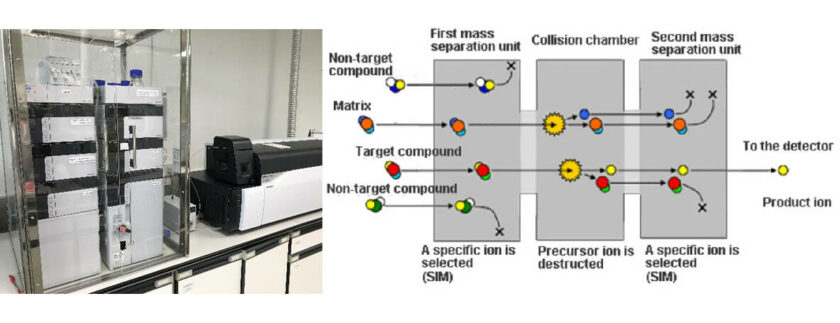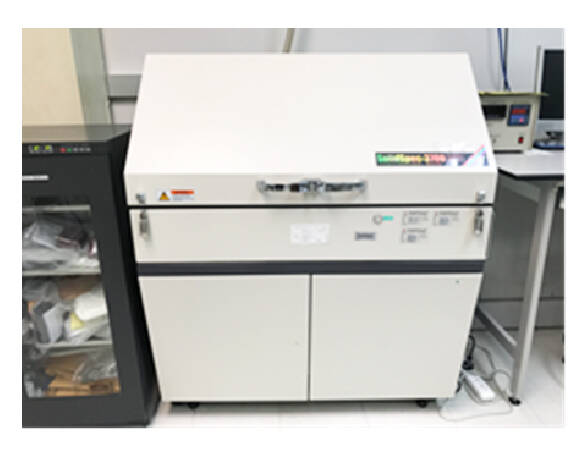SMARTTest Research Team

The SMAT team focuses on research and development of material technology to reduce health and environmental impacts from emerging pollutants via the following 3 approaches;
1) Develop material technologies to solve pollution problems caused by hazardous waste, for instance, development of alternative materials to replace those containing hazardous substances.
2) Develop material technologies to reduce pollutant emissions, such as development of materials with unique properties to harvest energy from nature and the environment.
3) Develop material technology to meet the demand for environmentally friendly materials, for example, development of new material production processes that reduce pollution and production cost.
1. Research and develop material technologies to minimize negative impacts to the environment.
2. Develop analytical techniques and testing methods for new knowledge and information in the field of materials for the environment.
 |  |  |
• Development of infrastructures on characterization of hazardous contaminations in products.
• Development of research for identification of emerging pollutants and solutions.

1. Gas chromatography(GC) equipped with a mass spectrometry (MS) as a detector is a high-performance tool for compound analysis, including determination of gaseous organic contents. The equipment is suitable for volatile and thermally stable samples.
1.1 GC-MS equipped with a thermal desorption unit (TMD)
1.2 GC-MS equipped with a flame ionization detector (FID) and an electron capture detector (ECD) that are also compatible with headspace and solid-phase micro extraction (SPME) analytical techniques.


Example of activities
- Determination of volatile organic compounds (VOCs) in air, resins, and automobile parts.
- Determination of POPs contents in various samples such as hexabromocyclododecanes (HBCDs) and polybrominated diphenyl ethers (PBDEs).
2. High performance liquid chromatography (HPLC)
is generally used for separation and qualitative/quantitative determination of organic compounds in liquid phase. The HPLC is be equipped with the following types of detectors:
2.1 MS/MS (Triple quadrupole)
2.2 Photodiode array (UV)

Example of activities
– Determination of volatile organic compounds (VOCs) such as formaldehyde and acetaldehyde in automobile components.
– Determination of drugs (antibiotic and anti-cancer) release from drug delivering materials.
– Determination of POPs contents in various samples such as hexabromocyclododecanes (HBCDs) and polybrominated diphenyl ethers (PBDEs).
3. Ion Chromatography (IC)
determines ions based on ion exchange phenomenon. This technique is able to detect substrate that dissociate as anions and cations for example detection of nitrate ions from gun powders, F-, Cl-, Ca2+ and Mg2+.

4. Fourier Transform Infrared Spectroscopy (FT-IR)
determines covalent functional groups in solid and liquid samples. Especially In the attenuated total reflectance (ATR) mode, surfaces can conveniently be tested without sample preparation steps.

5. Ultraviolet-Visible-Near Infrared (UV-VIS-NIR)
Spectrometry is an analytical tool that is used for quantitative and qualitative determination of transparent liquid and solid samples (such as films or papers), in the 200-2500 nm region.

6. Energy Dispersive X-Ray Fluorescence (ED-XRF)
can be used to obtain qualitative and quantitative elemental profiles ranging from carbon to uranium in solid, powdered and liquid samples, including electronic components.

7. Glow Discharge Spectroscopy (GDS) & GD-Profiler
is an elemental analysis equipment that is suitable for metal surfaces. The spectroscopy is able to generate elemental dept-profile and bulk analysis of samples.

8. Electron Probe Micro Analyzer (EPMA)
is an elemental analysis technique to obtain quantitative and qualitative data from conductive materials. The instrument is equipped with electron microscope in various setting such as mapping, scanning electron and cross section.

9. Inductively Coupled Plasma (ICP)
with Optical Emission Spectrometry (OES) detector determines contents of metal elements in samples, such as a detection of lead in natural gas pipelines.

Research Teams in Environment Research Group


